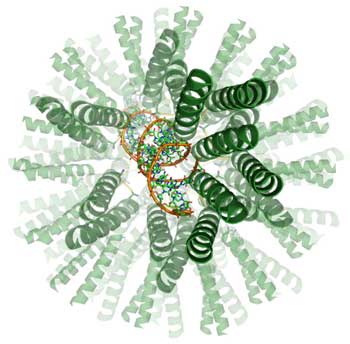| Posted: Sep 27, 2016 |
The world's smallest artificial virus
(Nanowerk News) Synthetic biology can be broadly defined as an enabling capability to engineer biology. This does not mean to create a new life, but to re-use and re-purpose nature's designs for the specific needs of the society. However, in order to engineer biology one must understand how, when and why biology works. And the best way to do this is to copy nature.
|
|
In this vein, NPL is developing physical biology – a discipline that strives for quantitative insights into biological systems at different levels of complexity, with an ultimate goal of producing reference standards, practices, methods and materials to ensure the safe and reliable use of synthetic biology.
|
|
A recent example to illustrate the reach and application of such a strategy has just been reported in the Journal of the American Chemical Society ("A De Novo Virus-Like Topology for Synthetic Virions") which publishes findings of exceptional significance from across the chemical, physical and life sciences.
|
 |
| A molecular model of a virus shell (green) encapsulating a gene (orange). (© American Chemical Society)
|
|
Using the principles of engineering metrology, an NPL-led research team emulated the most abundant form of life – viruses. Instead of using large complex proteins that make up viral shells the team designed very short protein fragments that assembled into the world's smallest virus, just 12 nm in diameter. Furthermore, the virus was shown to be structurally plastic with the ability to adapt its size to the size of genes it encapsulates.
|
|
Recognising the potential of the structure for applications, the American Chemical Society has highlighted this work in their recent press release explaining the promise and impact the virus may have in genetic medicine.
|
|
Indeed, with their uniform sizes and morphology, the virus shells provide a solid platform for developing candidate reference materials as suitable standards for gene transfer products. This work emphasises the impact measurement science makes on innovative solutions to healthcare, while contributing to the growing engineering metrology toolbox for life sciences. The healthcare, food production, energy, defence and computing sectors are all customers of the capability.
|

